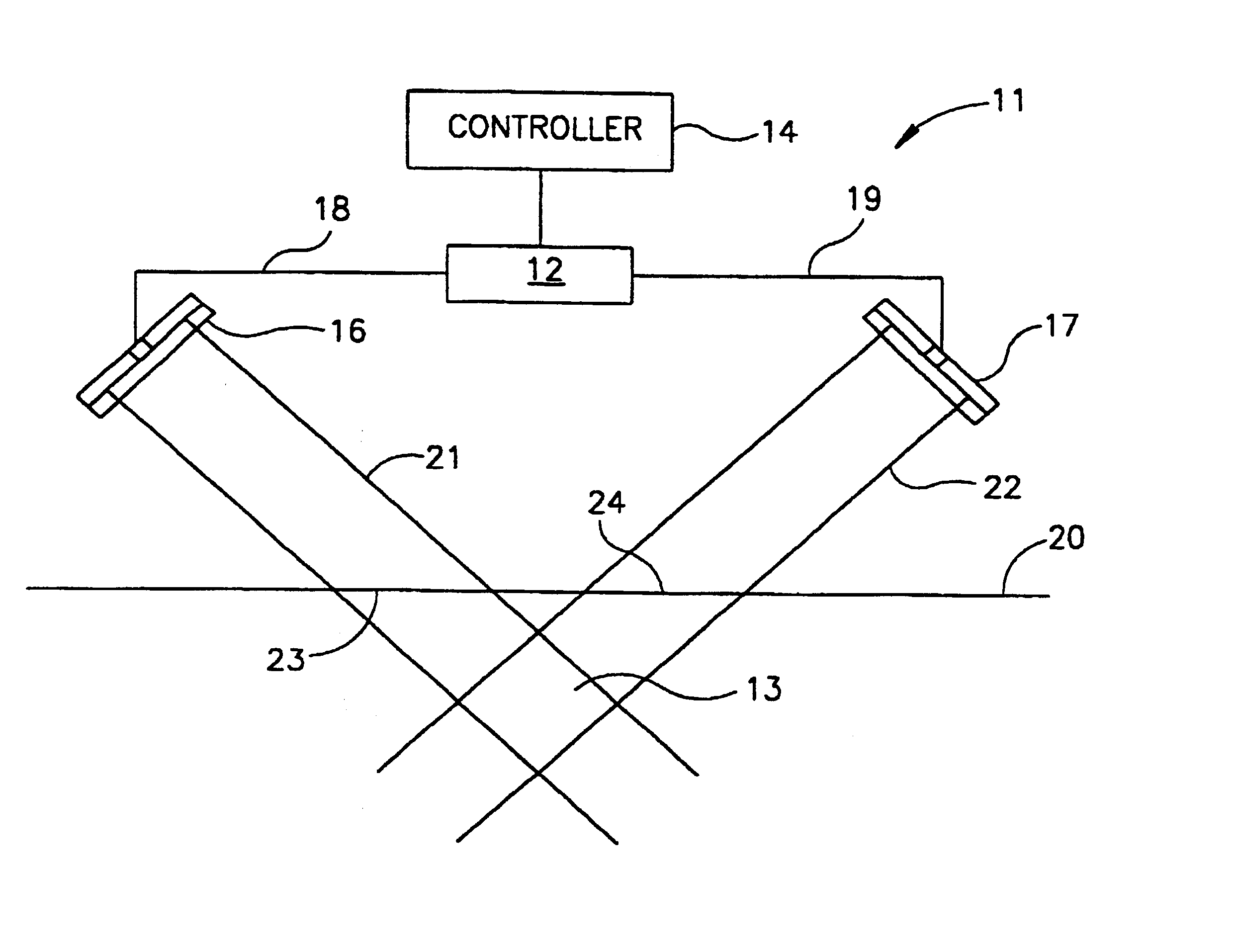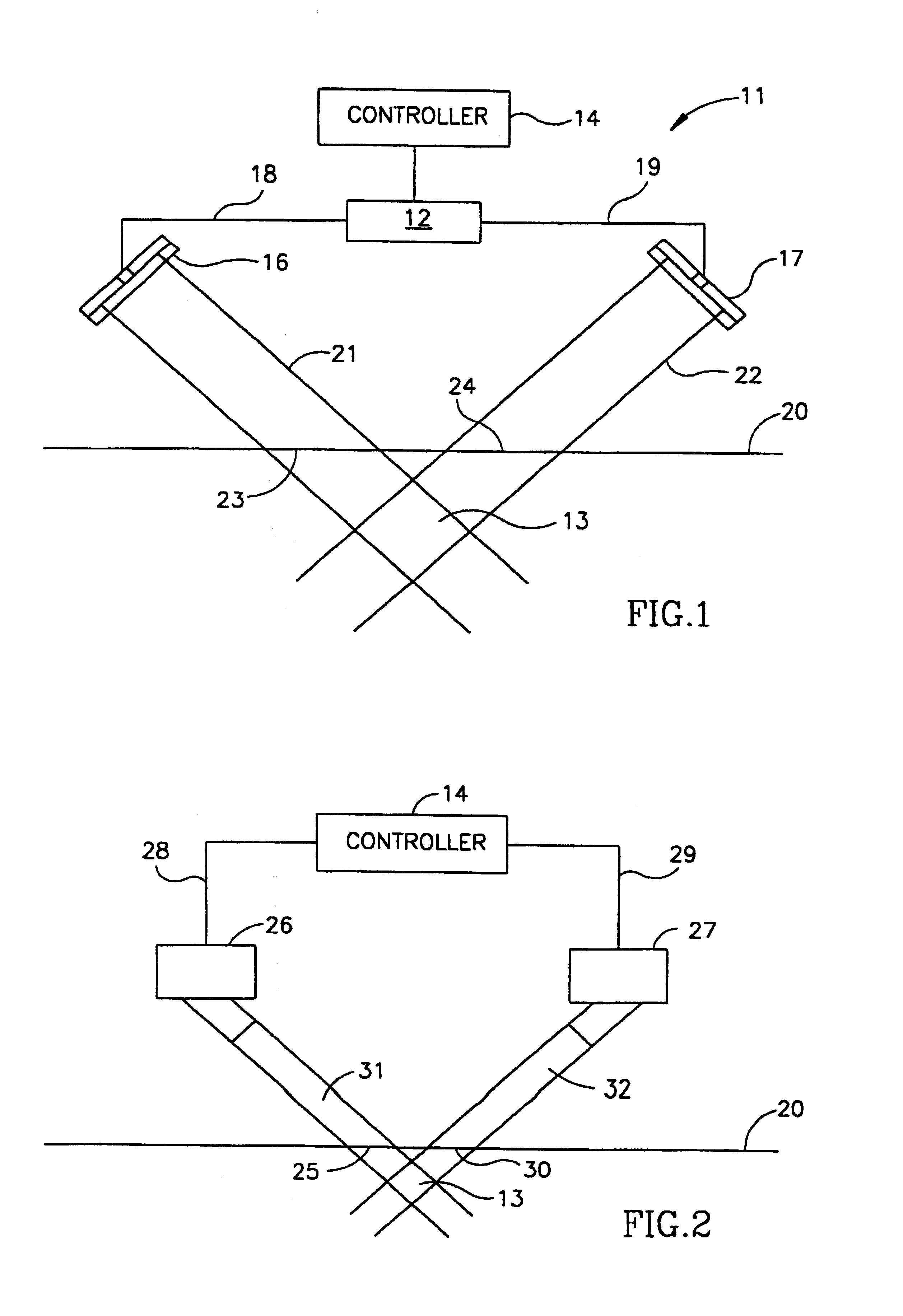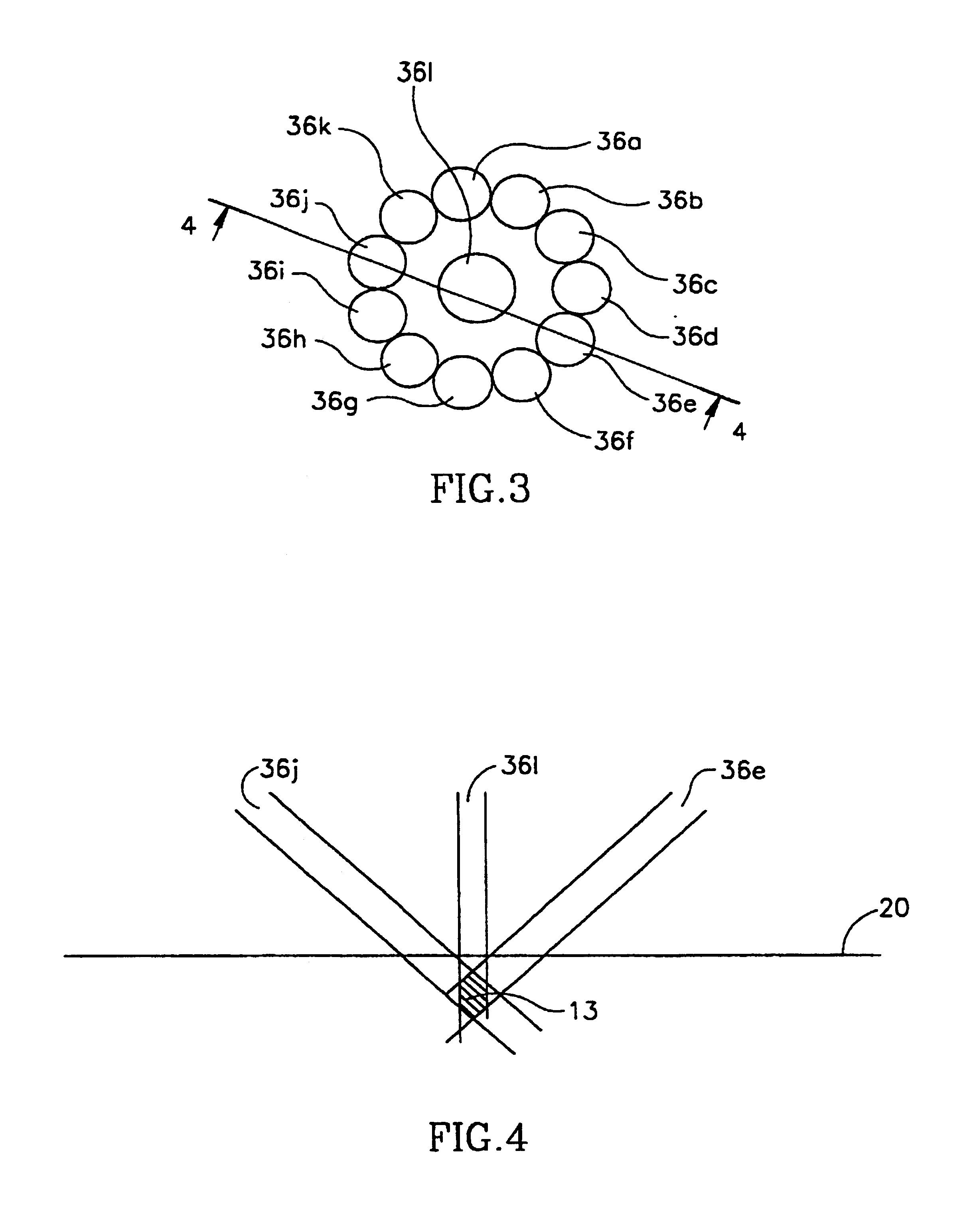Selective photothermolysis
a selective photothermolysis and apparatus technology, applied in the field of apparatus and a selective photothermolysis, can solve the problems of scarring of surrounding tissue, increased risk of healthy tissue damage, etc., and achieve the effect of preventing healthy tissue surrounding
- Summary
- Abstract
- Description
- Claims
- Application Information
AI Technical Summary
Benefits of technology
Problems solved by technology
Method used
Image
Examples
Embodiment Construction
[0045]An aspect of the present invention is a method and device for selective photothermolysis of various sized targets. Specifically, the present invention can be used to remove varicose veins and or port wine stains, psoriasis and similar unsightly tissue with equal facility and with minimal damage to the surrounding healthy tissue.
[0046]Referring now to the drawings, FIG. 1 is a schematic diagram of a basic preferred embodiment of the present invention. There is shown in FIG. 1 a system 11 which comprises a single source of monochromatic light 12. Preferably, the monochromatic light source provides a laser beam. Alternatively, the source could be the source of broad-band (white) light operated in conjunction with a filter (not shown) to filter out all of the white light, except for the desired monochromatic light. The monochromatic light, preferably, is at a wavelength of between 550-800 nanometers, directed at a target 13 through the epidermis and surrounding tissue.
[0047]A cont...
PUM
 Login to View More
Login to View More Abstract
Description
Claims
Application Information
 Login to View More
Login to View More - R&D
- Intellectual Property
- Life Sciences
- Materials
- Tech Scout
- Unparalleled Data Quality
- Higher Quality Content
- 60% Fewer Hallucinations
Browse by: Latest US Patents, China's latest patents, Technical Efficacy Thesaurus, Application Domain, Technology Topic, Popular Technical Reports.
© 2025 PatSnap. All rights reserved.Legal|Privacy policy|Modern Slavery Act Transparency Statement|Sitemap|About US| Contact US: help@patsnap.com



